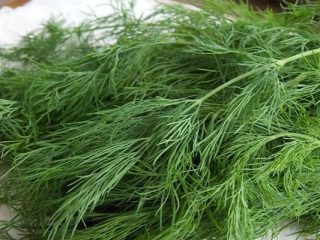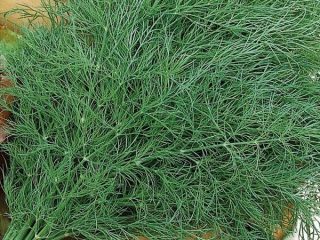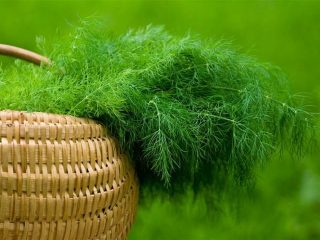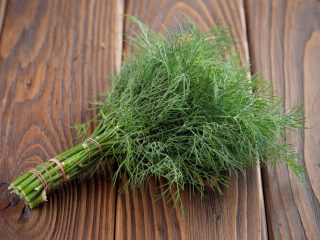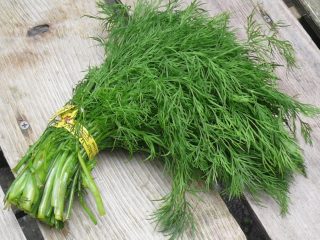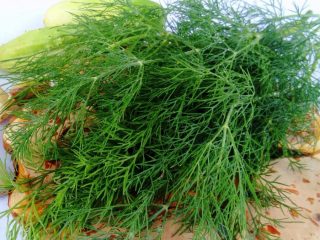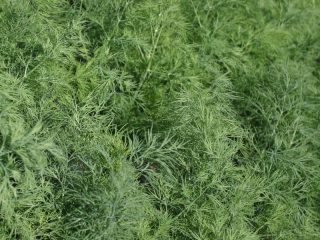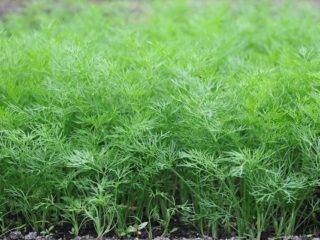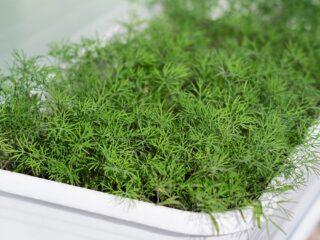Content
Gardeners most often plant dill seedlings to speed up the development of the crop. This method is also used when planting its bush varieties. It is known that the plant takes quite a long time to germinate, and, despite the fact that it is resistant to cold, even with the earliest possible planting in open ground, the harvest begins to bear no earlier than mid-June. But if you grow this spicy herb through seedlings, the first cutting can be done in early May.
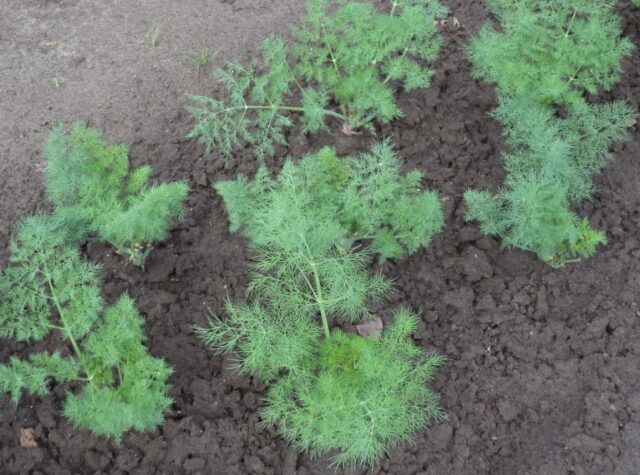
Dill was brought to Russia in the 12th century.
What does dill seedlings look like?
This plant belongs to the Apiaceae family and is one of the most common herbs in many countries around the world. Dill contains many vitamins and minerals, carotene, and folic acid. It has a beneficial effect on health; its regular use helps normalize blood pressure and metabolic processes, and improve appetite. In order for this useful herb to be on the table as early as possible, people began to grow it through seedlings.Thus, seedlings of the crop are ready for replanting literally a couple of weeks after germination, and its first harvest ripens in the spring, a month and a half after sowing.
Good seedlings that will produce lots of greenery should look healthy. Its tufts look strong and lush, bright green in color. The branches should not droop.
When to plant dill seedlings
In order for the crop seedlings to grow well by the beginning of the spring season, dill seeds for seedlings should be sown in April. In the case where further cultivation will take place in a greenhouse, work is carried out at the beginning of the month. If the seedlings are planned to be transplanted into open ground, then the date is postponed to mid or late April. Sowing time directly depends on the following factors:
- required number of days for germination;
- place for planting seedlings;
- growing season;
- frost resistance of the variety;
- estimated timing of cutting greenery;
- purpose of growing the plant;
- climate features of the planting region.
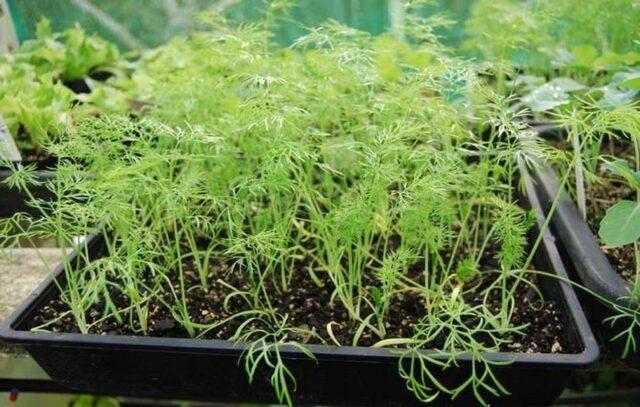
In addition to the fact that the plant is widely used in cooking, all its parts are also used in medicine.
How to grow dill seedlings
The crop is grown to produce seedlings in several ways. After reviewing the available options, the gardener can choose the one that is more suitable for himself. In addition to the fact that the seeds are sown according to the standard scheme in containers filled with soil, many grow dill seedlings in rolled-up papers (snails), which is no less convenient.
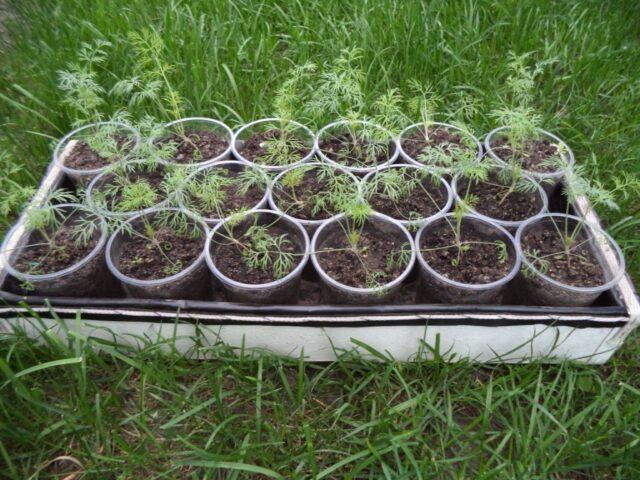
If the dill umbrellas are not removed in the fall, the next year it will sprout in the same place
Selecting a location
The best place to grow seedlings of spicy herbs is considered to be a light windowsill.The containers are placed on it immediately after friendly shoots of the crop appear on the surface of the soil. If daylight hours are still short, you need to take care of additional lighting for young greenery.
The temperature in the room where the culture will be kept should be between +15-18 °C.
Seed preparation
In order for plantings to bring a good and abundant harvest, it is important to correctly select and prepare crop seeds for sowing. If you collect them yourself, then this should be done exclusively from healthy plants. Pay attention to the aroma. Good planting material has a characteristic odor, while old seedlings do not smell anything. In addition, high-quality dill seeds should be cool to the touch.
To improve the germination of planting material, it is advisable to rid it of excess essential oil by alternately immersing it in hot and then cold water for a couple of seconds. This procedure must be repeated about twenty times. Afterwards, the seeds need to be transferred to damp gauze and left in it for several days.
If dill seeds for seedlings are purchased in a store, there is no need to calibrate them. But it is still recommended to soak them for speedy germination.
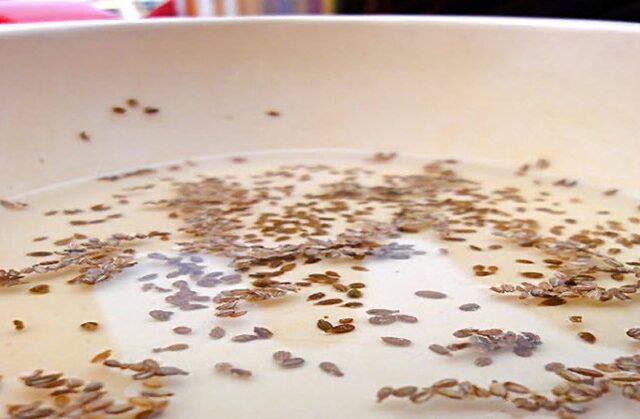
The seeds of this herb usually have good germination
Soil preparation
For a pronounced aroma and taste of the green mass of dill, it should be planted in high-quality soil, which must meet a number of requirements and have:
- sufficient amount of microelements;
- good aeration;
- acidity indicator no more than 7.5 pH.
Ready-made soil is ideal for planting dill seedlings; you can also take soil from the site and mix it in a 1:1 ratio with humus.
Selection of capacity
As for the container, you can use almost any container; dill seedlings grow in cups, containers, and peat pots. You can plant it in small boxes.
If the seeds are placed in a plastic container, drainage holes will need to be made in the bottom.
Sowing scheme
Planting dill seedlings does not require complicated steps. Its diagram looks like this:
- A two-centimeter layer of drainage is arranged at the bottom of the containers.
- Pour in fertile soil, not reaching the edge of the container by 10 mm.
- Water generously and allow the water to soak in.
- Spread the seeds over the surface and sprinkle with a small layer of soil.
- Moisten the plantings with a spray bottle.
- Cover the containers with film and put them in a room where the temperature is kept at about 20 °C.
To save space, many housewives grow dill seedlings in a snail without using soil. The method has recently been gaining popularity among gardeners, due to the fact that it is more convenient, faster and less expensive. To do this, fold a plastic bag in half lengthwise, place toilet paper on top of it, and moisten it with water. Having retreated 1 cm from the edge, spread the seeds along the entire length at intervals of 1 cm, roll them up, place them in a plastic container with a small amount of water, cover the top with a bag and wait for the sprouts to appear.
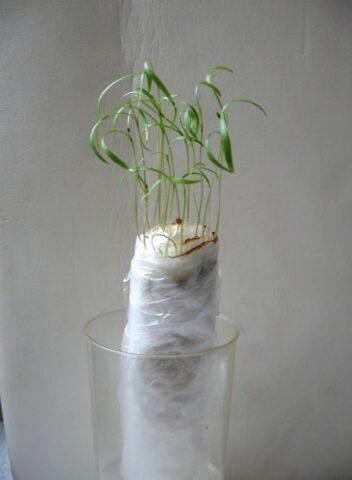
Dill seedlings usually fully germinate within 14-20 days
Further care
Despite the fact that dill is an unpretentious crop, it still needs care. After seedlings appear on the surface of the earth, the seedlings are placed on the windowsill and suitable conditions are created for them. Watering is carried out exclusively with water that has stood for at least 12 hours so that the soil is constantly moist and a crust does not form on its surface. When the seedlings grow to 3 cm, they are thinned out. If the soil for sowing is fertile, seedlings do not need fertilizing.
Planting dill seedlings in open ground
You can start planting dill seedlings in open ground two weeks after germination. To do this, choose an area in which any plants other than Umbelliferae grew last year, since crops are affected by the same diseases and insects.
Before carrying out work, it is necessary to prepare the bed in advance. To do this, dig up the soil along with humus, remove debris and weeds. Dill seedling bushes are planted at a distance of 20 cm from each other, but they should not be buried too deep. Planting is done early in the morning, after sunset or on a cloudy day. Before placing dill seedlings in a permanent place, the soil is well moistened.
After transplanting a crop, it needs to be looked after. Agricultural technology for growing dill involves regular watering with settled water, loosening the top layer of soil, and removing weeds. To improve productivity, monthly fertilization of spicy greens with nitroammophos is allowed.
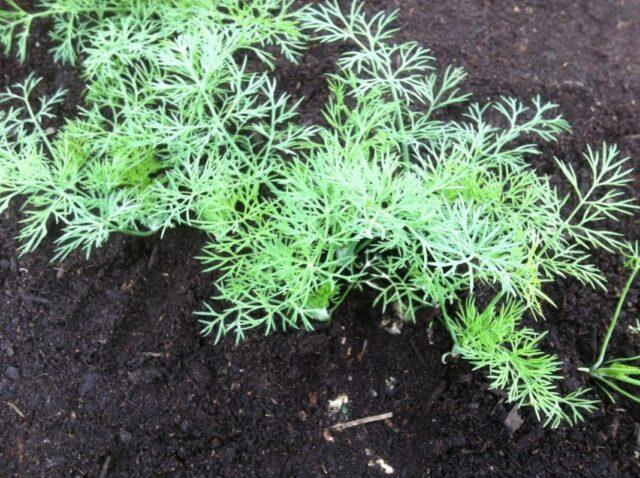
Dense planting of dill negatively affects its yield
Conclusion
Planting dill seedlings is quite easy. Anyone, even a novice gardener, can cope with this procedure. If you follow the above recommendations, you can get fresh herbs about a month earlier than standard. Dill is a very useful plant that should be included in every person's diet.
